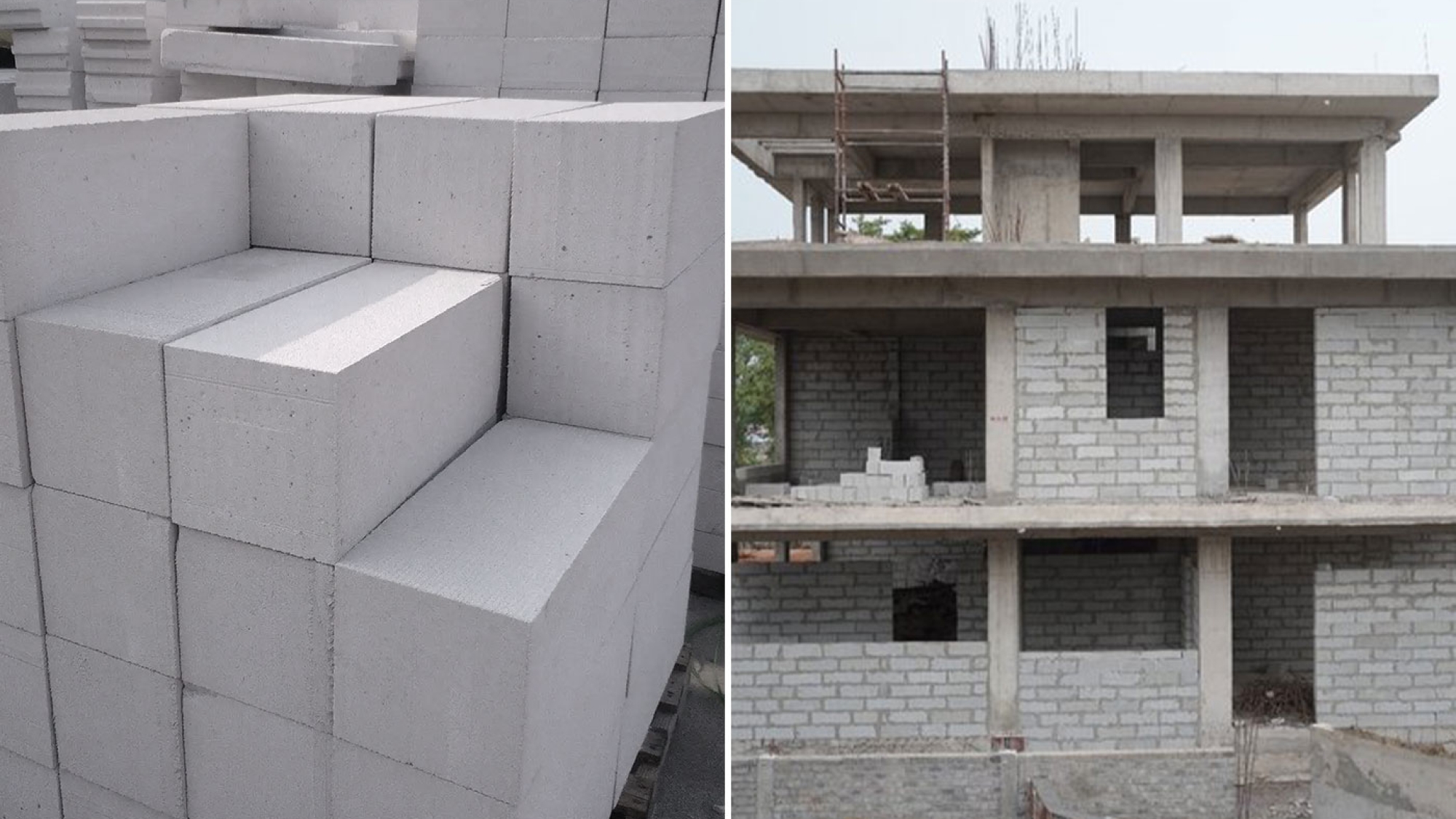Creating an ideal “HOME” is everyone’s dream. Now a days, many advanced modern techniques are implemented in the construction of any building may it be a residential, commercial.
When creating your ideal home, the most important factor to consider is constructing with an eco-friendly materials to help the environment while also saving money. For example, burnt clay bricks are deemed inferior because of their impact on the environment. This is why Autoclaved Aerated Concrete Blocks (AAC Blocks) became a turning point on global level with high demand as they have superior benefits and are popular as well as pocket friendly.
Traditional Brick Walls were a leading source of pollution, which can include carbon dioxide, methane and even lead. These harmful substances are released by burning fossil fuels that create carbon dioxide emissions from the energy industry. By switching to AAC Blocks, you will contribute helping the environment and your wallet both. AAC blocks are made from 100% recycled materials, including crushed concrete from industrial waste rocks. The main advantage of incorporating AAC Blocks are they offer a lower carbon footprint and benefit from both fire resistant and sound proofing, making them an ideal addition to any home.
People are unaware about AAC Blocks. As a sustainable construction material it is composed of aggregates of calcined gypsum, quartz sand, lime, Portland cement and aluminum powder. Their sustainable characteristic differs from other materials and therefore used as a replacement of wood, concrete, steel and other conventional building materials. AAC Block is an environmentally friendly block material that is made from recycled materials that are safe for people, animals and all life on this planet. AAC Blocks are becoming increasingly popular as a low-cost, long-term replacement for conventional building materials around the world.
AAC Block, is a lightweight building material with good insulation properties and sound absorption properties. It provides excellent thermal performance for buildings with an advantage of conduction over convection. Because of their lightweight properties, the AAC Blocks can be efficiently and effectively to work with any building construction. Other than that, its also act as good moisture resistance and so it can be used for walls and floors in residential, commercial and industrial applications, interior and exterior walls, ceilings, beams and columns.
Our AAC Blocks are the perfect option for your next home project. Easy to mix, handle and install, these blocks have the strength of concrete with the flexibility of a foam product. The speciality of these blocks are they are light in weight, strong and highly insulating. They’re formed from autoclaved hardened concrete that has low shrinkage, high tensile strength, and greater durability than stone or bricks. They are manufactured using a mixture of sand, cement and aggregate that is autoclaved after it has been mixed, kneaded and formed into bricks. They are durable and weather-resistant, and can be implemented in many different applications. They are being used as a building material in the construction of residential, commercial and industrial structures.
Features of AAC Blocks
Colour: Greyish White.
AAC Block Size: 50% lighter than Red Bricks, making it easier to transport.
Fire Resistant: Up to 6 hours without issue or damage.
Energy Optimization: Derease of 20% – 25% in cooling cost.
Temperature Efficiency: Maximum increase over Clay Bricks.
Water Absorption: Have a lower water absorption rate than clay bricks, which reduces wastewater volumes by 10%.
Noise Absorption: Very less noise absorption upto 42 decibels approx.
Size and Costs
Thanks to modern technological advances, AAC blocks come in a variety of shapes, sizes, strengths and prices. AAC Blocks are an environmentally safe alternative to concrete and offer many advantages over standard building materials such as high durability and flexibility. It is one of the most widely used construction materials, compared to many other alternatives. The cost of an AAC block depends on quality, quantity purchased, shape and size. AAC blocks have been used by architects in recent years as a sustainable way to build using less energy and water.
Advantages of AAC Block
Using AAC (Autoclaved Aerated Concrete) blocks for building construction provides a number of advantages over traditional building materials:
Light Weight: Aerated Autoclaved Concrete (AAC) blocks are increasingly popular for many types of construction projects, from residential homes to large-scale commercial projects. Their lightweight design and superior insulation properties make them a great choice for any project. They are easier to handle and transport, and reduce the load on the building’s structure, makes them even more appealing option for architects, builders, contractors etc.
Earthquake & Fire-Resistance: When it comes to safety both in terms of Earthquake & Fire-Resistance, AAC blocks provide an additional layer of protection. They are excellent choice for areas that are prone to fire and other disasters like earthquakes, flood. They provide an additional layer of fire-resistance, reducing the spread of smoke and fumes and helping to protect against the risk of smoke inhalation.
Eco-Friendly: During any construction process, the most important factor to consider is to conserve environment. AAC blocks help conserve natural resources, and acts as an environmentally friendly alternative compared to traditional materials. They are the perfect solution for any building project as they require less energy and labor for installation, resulting in lower building costs.
Other than that, AAC Blocks are durable and last for several decades. They have also the capacity of reducing noise transmittion and are easy to mold in any shape, size as per the requirement.
Disadvantages of AAC Block
Costly: The cost of AAC blocks are very high but the overall construction procedures is cost-effective.
Brittle: However, due to their brittle nature, special care needs to be taken when handling and transporting them. In addition, they require a thicker wall than red clay bricks when used alone. As a result, many builders opt for adding a layer of insulation around their buildings. Insulation helps to reduce the cost of heating and cooling, making it more energy efficient.


Add a Comment